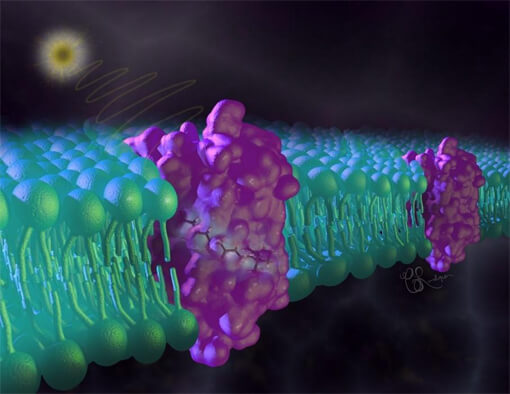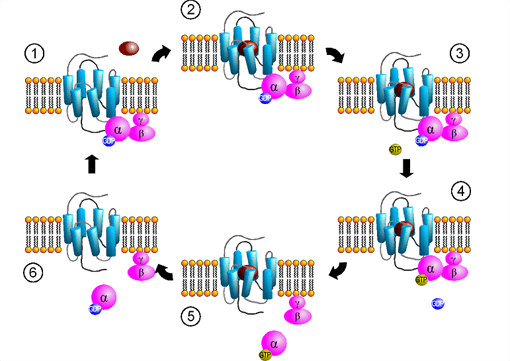Custom MemPro™ GPCR Structure-Function Services
Creative Biostructure has been known worldwide for its breakthrough in G protein-coupled receptor (GPCR) protein crystallization and structure determination techniques. A strategic and unparalleled platform based on membrane protein structure-function technologies is used for solving GPCR structures and understanding their functions. In addition, our experienced scientists can evaluate and analyze the possible applications of GPCR functions in the areas of pharmaceutical research and drug discovery.
GPCRs, also known as seven-transmembrane domain receptors and G protein-linked receptors (GPLR), constitute a large protein family of receptors that sense molecules outside the cell and activate inside signal transduction pathways and, ultimately, cellular responses.

Rhodopsin-Like GPCR
As macromolecules, GPCRs are structurally flexible and dynamic, adopting different conformations in response to different environmental factors. It is believed that a conformational equilibrium exists for a GPCR molecule between the active and inactive biophysical states: e.g., the binding of ligands to a GPCR may shift the equilibrium toward the active state. Three types of ligands exist: agonists, inverse agonists or antagonists and neutral antagonists. It is still not known how exactly the active and inactive states differ from each other. But a thorough understanding of the involved mechanism is critical for rational ligand design to manipulate GPCR functions. Thus using structural knowledge for successful drug discovery remains an ultimate goal in the field.

GPCR: Conformational Change and Signal Transduction
Biochemical and biophysical techniques, such as NMR, X-ray crystallography and mass spectrometry, are providing complementary insights into the ligand-dependent dynamic equilibrium between the two functional states. GPCRs are found to be allosteric machines, recognizing a diverse array of ligands and transmitting signals 30 angstroms across the cell membrane. Structural studies also shed light on the understanding of allosteric modulation and biased signaling of the receptors.
Computer modeling can reveal the GPCR structure-function relationship across the superfamily, illustrate molecular interactions and aid rational drug discovery.
Guaranteed High-quality Services:
- Quick assessment and optimization of targets for construction, high level expression, stability and crystallizability.
- Panel of purified protein assays to facilitate crystallization, crystal optimization and structure determination.
- Customized screening methods.
- High QA/QC standards.
- Data reporting: complete standard or customized reports for seamless integration into in-house databases.
- Functional screening: follow ups on hits in any GPCR function assays.
Learn more information about our MemPro™ membrane protein services.